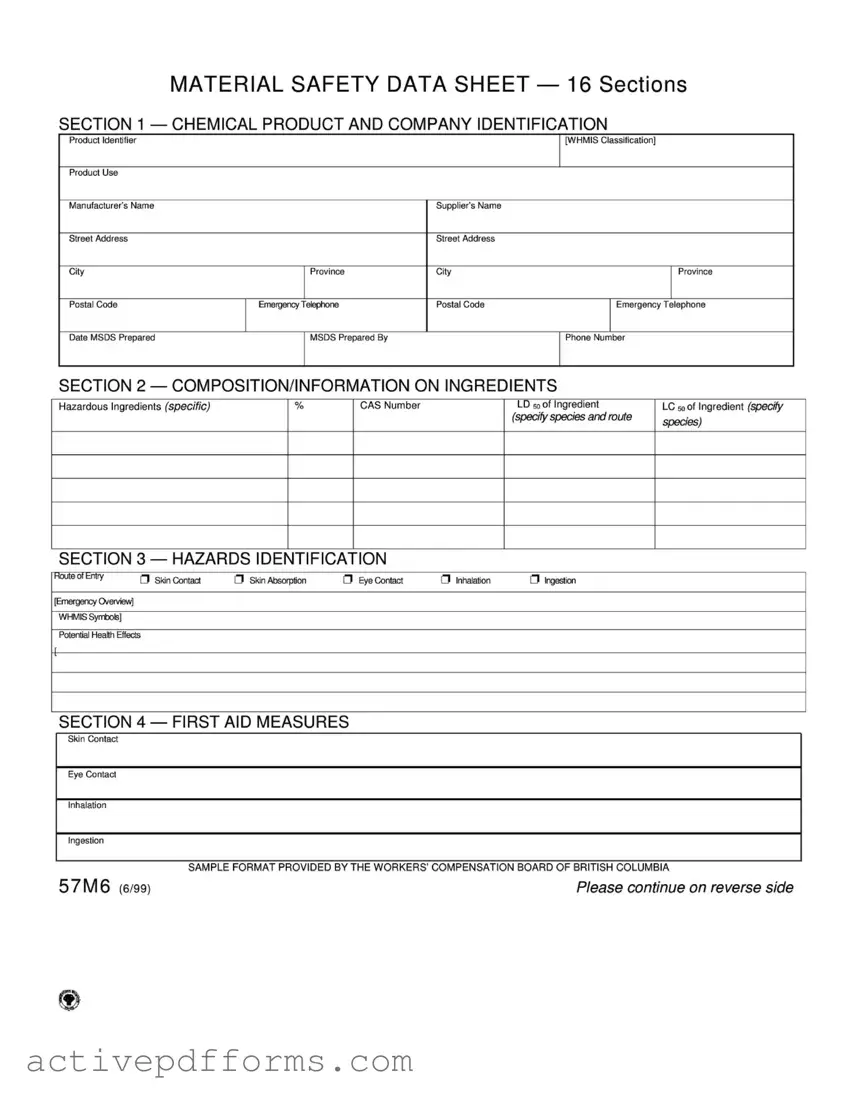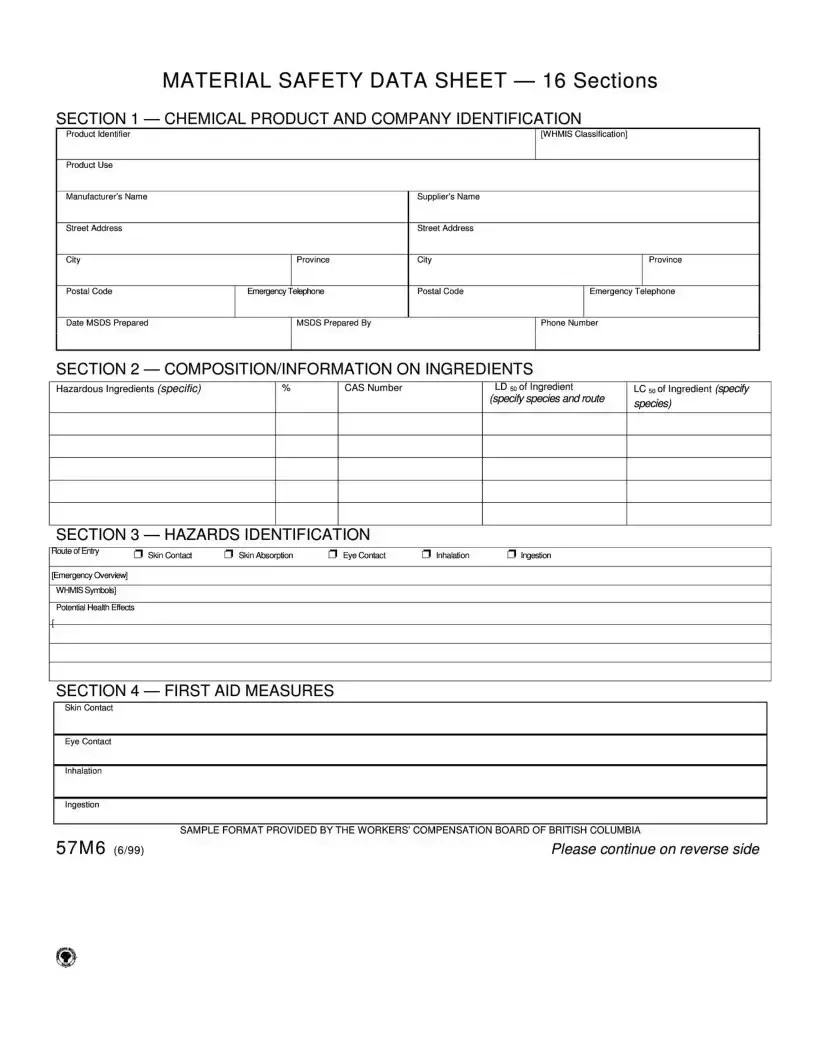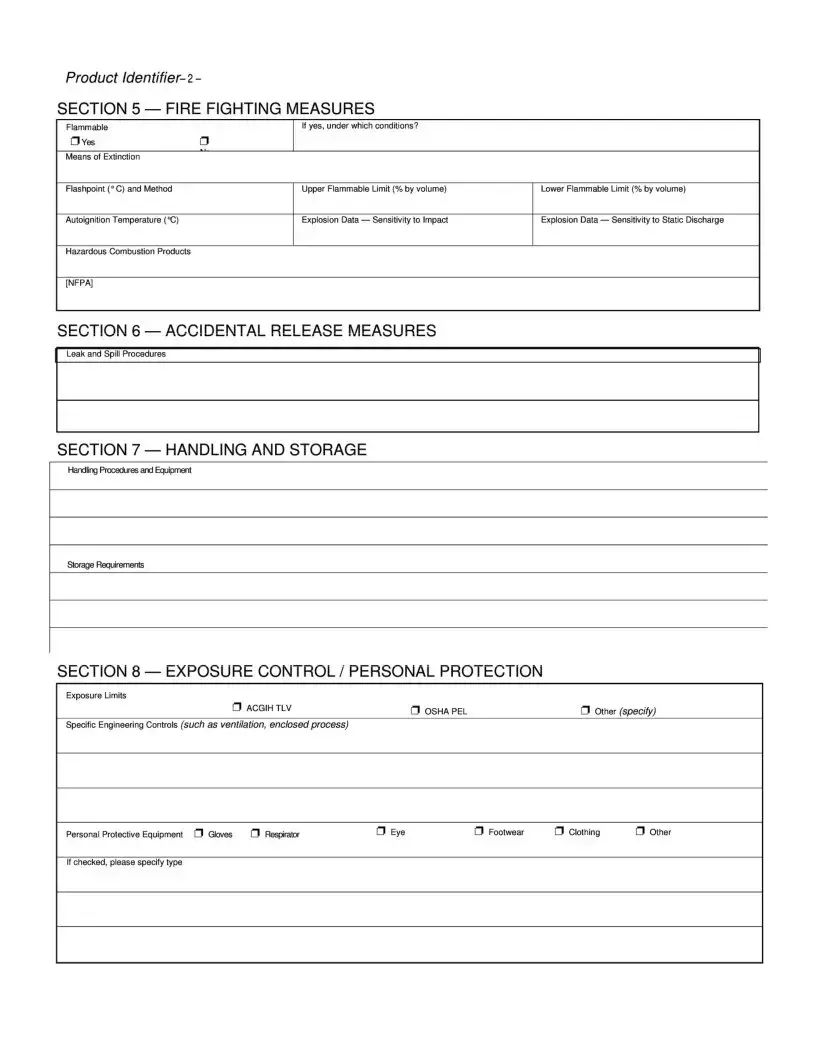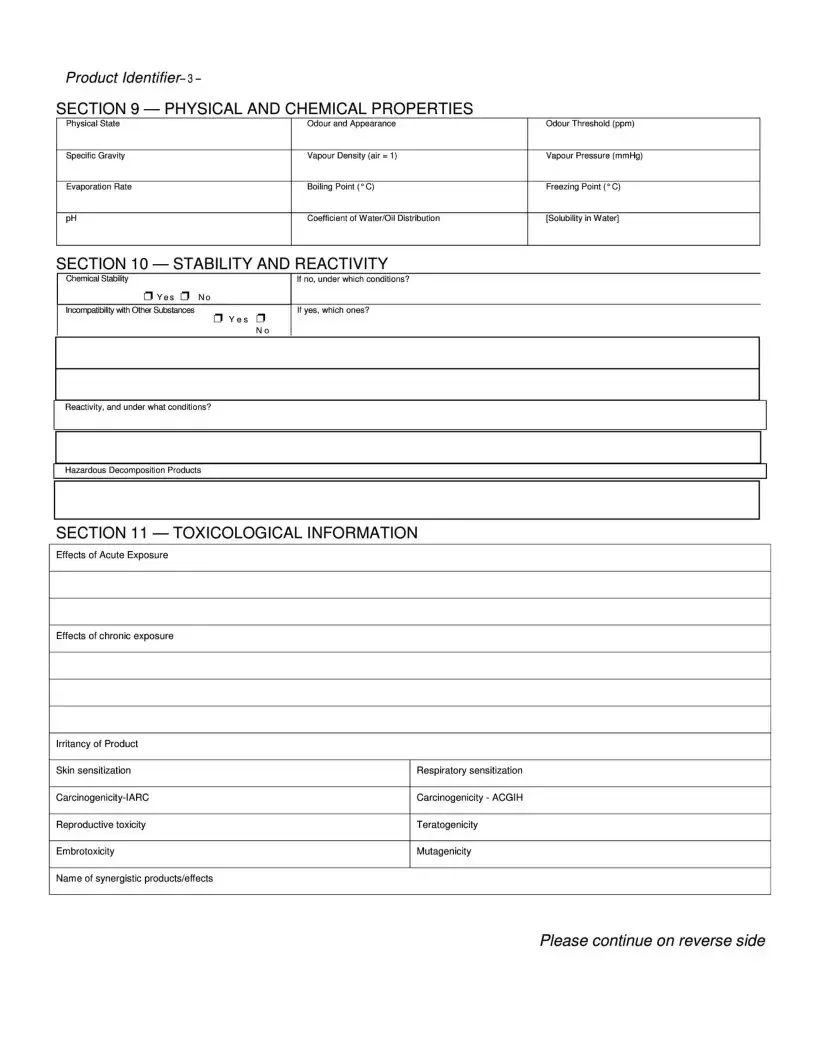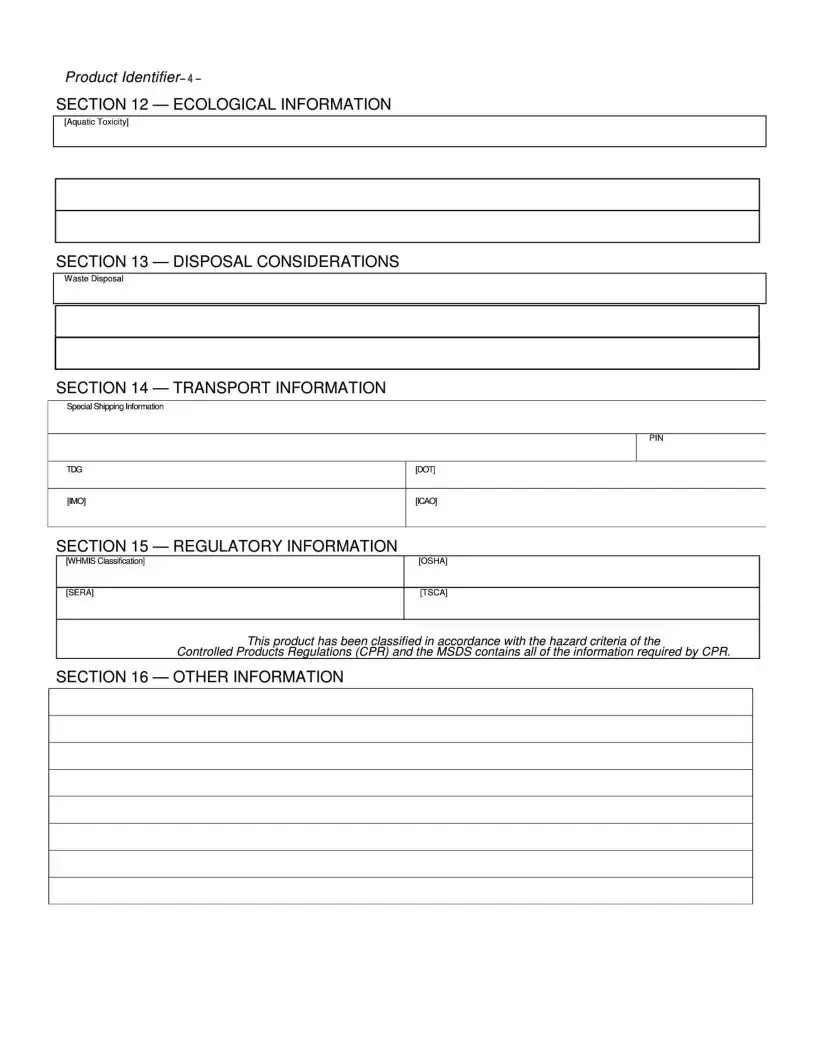MATERIAL SAFETY DATA SHEET — 16 Sections |
SECTION 1 — CHEMICAL PRODUCT AND COMPANY IDENTIFICATION |
|
Product Identifier |
|
|
[WHMIS Classification] |
|
Product Use |
|
|
|
|
Manufacturer's Name |
|
Supplier’s Name |
|
|
Street Address |
|
Street Address |
|
|
City |
Province |
City |
|
Province |
Postal Code |
Emergency Telephone |
Postal Code |
Emergency Telephone |
Date MSDS Prepared |
MSDS Prepared By |
Phone Number |
|
SECTION 2 — COMPOSITION/INFORMATION ON INGREDIENTS |
|
Hazardous Ingredients (specific) |
% |
CAS Number |
LD so of Ingredient |
LC so of Ingredient (specify |
|
|
|
(specify species and route |
species) |
|
|
|
|
SECTION 3 — HAZARDS IDENTIFICA1RON
О Skin Contact |
П Skin Absorption |
П Eye Contact |
П Inhalation |
П Ingestion |
[Emergency Overview]
WHMIS Symbols]
Potential Health Effects
4--------------------
SECTION 4 — FIRST AID MEASURES
5 7 M 6 (6/99) |
Please continue on reverse side |
Product ldentifier-2-
SECTION 5 — FIRE FIGHTING MEASURES
Flammable |
If yes, under which conditions? |
|
Yes |
|
|
Means of Extinction |
|
|
Flashpoint (°C) and Method |
Upper Flammable Limit (% by volume) |
Lower Flammable Limit (% by volume) |
Autoignition Temperature (°C) |
Explosion Data — Sensitivity to Impact |
Explosion Data — Sensitivity to Static Discharge |
Hazardous Combustion Products |
|
|
[NFPA] |
|
|
SECTION 6 — ACCIDENTAL RELEASE MEASURES
Leak and Spill Procedures
SECTION 7 — HANDLING AND STORAGE
SECTION 8 — EXPOSURE CONTROL / PERSONAL PROTECTION
Exposure Limits
ACGIH TLV |
0SHA pEL |
Д Other (Specify) |
Specific Engineering Controls (such as ventilation, enclosed process)
Personal Protective Equipment |
Gloves |
Respirator |
Eye |
Footwear |
Clothing |
Other |
If checked, please specify type
Product Identifiers -
SECTION 9 — PHYSICAL AND CHEMICAL PROPERTIES
Physical State |
Odour and Appearance |
Odour Threshold (ppm) |
Specific Gravity |
Vapour Density (air = 1) |
Vapour Pressure (mmHg) |
Evaporation Rate |
Boiling Point (°C) |
Freezing Point (°C) |
pH |
Coefficient of Water/Oil Distribution |
[Solubility in Water] |
SECTION 10 — STABILITY AND REACTIVITY
Chemical Stability |
If no, under which conditions? |
О Yes П No
Incompatibility with Other Substances |
If yes, which ones? |
|
Yes |
|
N о |
Reactivity, and under what conditions?
Hazardous Decomposition Products |
| |
SECTION 11 — TOXICOLOGICAL INFORMATION
Effects of Acute Exposure
Effects of chronic exposure
Irritancy of Product |
|
Skin sensitization |
Respiratory sensitization |
Carcinogenicity-IARC |
Carcinogenicity - ACGIH |
Reproductive toxicity |
Teratogenicity |
Embrotoxicity |
Mutagenicity |
Name of synergistic products/effects |
|
Please continue on reverse side
Product Identifier- 4-
SECTION 12 — ECOLOGICAL INFORMATION
[Aquatic Toxicity]
SECTION 13 — DISPOSAL CONSIDERATIONS
Waste Disposal
SECTION 14 —TRANSPORT INFORMATION
Special Shipping Information
TOG
[IMO]
SECTION 15 — REGULATORY INFORMATION
[WHMIS Classification] |
[OSHA] |
[SERA] |
[TSCA] |
This product has been classified in accordance with the hazard criteria of the
Controlled Products Regulations (CPR) and the MSDS contains all of the information required by CPR.
SECTION 16 —OTHER INFORMATION
